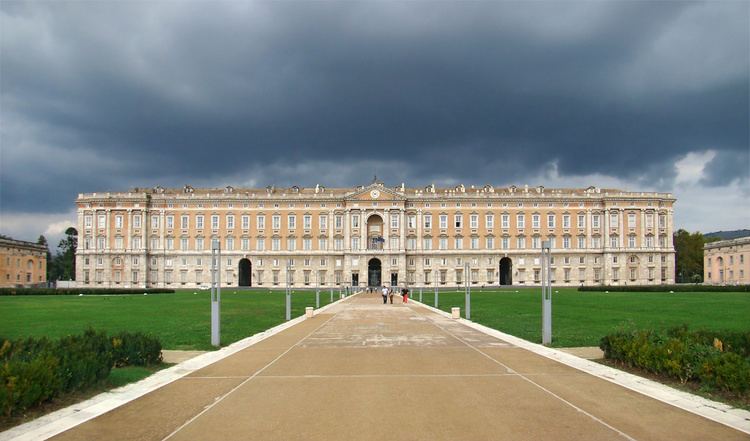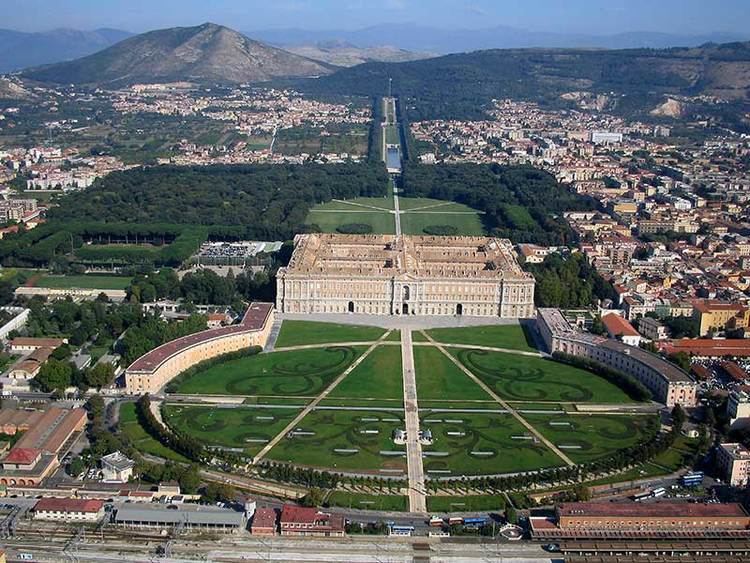Country Region | Area 53 km2 | |
 | ||
Points of interest Palace of Caserta, San Leucio, Tifata, Matera Cathedral | ||
University Seconda Universita degli Studi di Napoli Mayor Pio del Gaudio (The People of Freedom PDL) | ||
Map of Caserta
Caserta ([kaˈzɛrta] [kaˈsɛrta]) is the capital of the province of Caserta in the Campania region of Italy. It is an important agricultural, commercial and industrial comune and city. Caserta is located on the edge of the Campanian plain at the foot of the Campanian Subapennine mountain range. The city is best known for the Palace of Caserta.
Contents
- Map of Caserta
- Italy from above beautiful flying journeys from caserta to tivoli hd
- How to make fried italian meatballs with breadcrumbs italian dishes
- History
- Geography
- Frazioni
- Main sights
- Piazzas
- Sports
- Transport
- Twin towns sister cities
- Famous people
- References

Italy from above beautiful flying journeys from caserta to tivoli hd
How to make fried italian meatballs with breadcrumbs italian dishes
History
Modern Caserta was established around the defensive tower built in Lombard times by Pando, Prince of Capua. Pando destroyed the original city around 863. The tower is now part of the Palazzo della Prefettura which was once the seat of the counts of Caserta, as well as a royal residence. The original population moved from Casertavecchia (former bishopric seat) to the current site in the 16th century. Casertavecchia was built on the Roman town of Casam Irtam (the name Caserta is a subsequent contraction of Casa(m) Irta(m) meaning "home village located above").

The city and vicinity were the property of the Acquaviva family who, being pressed by huge debts, sold all the land to the royal family. The royal family then selected Caserta for the construction of their new palace which, being inland, was seen as more defensible than the previous palace fronting the Bay of Naples.
At the end of World War II, the royal palace served as the seat of the Supreme Allied Commander. The first Allied war trial took place here in 1945; German general Anton Dostler was sentenced to death and executed nearby, in Aversa.
Pope Francis visited Caserta on Monday, 28 June 2014, together with a friend named Giovanni Traettino who pastors an evangelical, charismatic/Pentecostal Protestant church. The Pope apologized for the complicity of some Catholics in the persecution of Protestant Pentecostals during the fascist regime in Italy.
Geography
Caserta is located 40 kilometres (25 mi) north of Naples. Its municipality borders with Capua, Casagiove, Casapulla, Castel Morrone, Curti, Limatola (BN), Maddaloni, Marcianise, Recale, San Felice a Cancello, San Marco Evangelista, San Nicola la Strada, San Prisco, Sant'Agata de' Goti (BN), Santa Maria Capua Vetere and Valle di Maddaloni.
Frazioni
Main sights
Piazzas
Sports
The city has some experience in hosting major international sports events such as the EuroBasket 1969.
It is home to Juvecaserta Basket, Italy's 1991 basketball champion.
Transport
Caserta railway station is a hub for regional and national traffic, and represents an important interchange linking Rome and Naples to Bari. The nearest airport is Naples-Capodichino, located about 30 kilometres (19 mi) south.
Caserta is the starting point of the A30 motorway to Salerno and is served by two exits of A1 motorway: Caserta Nord (Caserta North, near Casagiove and Casapulla) and Caserta Sud (Caserta South, near Marcianise and San Marco Evangelista).
Twin towns — sister cities
Caserta is twinned with:
Famous people
Caserta was the birthplace of the Italian writer Maria Valtorta, as well as the air power theorist Giulio Douhet.
Fictional character Jennifer Melfi of The Sopranos said her family was from Caserta. Techno DJ/Producer, Giusy Zarigno, is also from Caserta.
The great English cricketer Hedley Verity is buried there, having died in a Caserta hospital on 31 July 1943 of wounds sustained in the World War II Allied invasion of Sicily.
